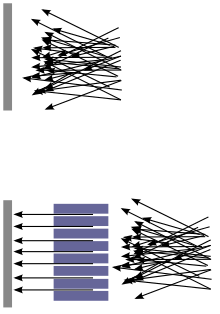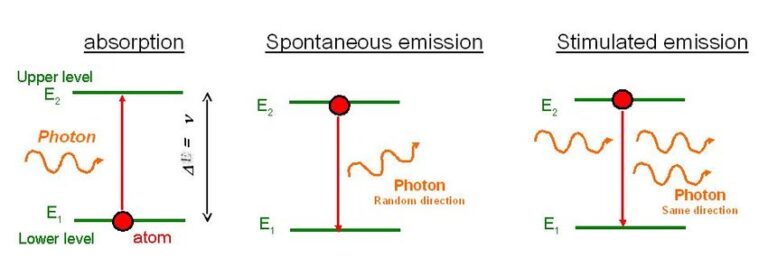Laser
The word Laser is an acronym for a longer sentence. It is short for Light Amplification by Stimulated Emission of Radiation. DAS systems and many other systems use Laser technologies. The FOTAS system uses laser light to obtain intrusion data. As mentioned in the OTDR post, laser light travels across the fiber optic cable and scatter inside the cable. These scattered lights are collected by the OTDR unit.

Importance of Lasers
The laser can seem to be a standard light source. But the reality is far from this. The fact that laser light is a special kind of light. First of all laser light is collimated. It means that all the laser lights are parallel to each other and unidirectional. They all go in the same direction. This phenomenon makes a lot of things happen. One of them is the light does not lose any of the power that wants to be delivered. If you want to illuminate a small area or spot you cannot use a light bulb or LED light alone. You need another optical device. Collimation phenomena are important because of power delivery. All the light power that you want to deliver goes to the location you want to for example inside of the Fiber Optic Cable.
The other specialty is a multi-purpose feature of laser light which is coherence. Laser light is a coherent light which means the photons that laser generate have the same phase, direction, and polarization. These advantages make lasers very useful. They make laser printers work or Cd-Dvd readers-writers work. Also, the equality of phases makes Phase-OTDR’s and makes the FOTAS work properly.
We briefly explained the direction phenomena. Now let’s explain what phase and phase differences means. Phase word means “appearance” in greek. Hence phase difference means appearance difference. If there is a phase difference between waves they appear differently although they are the same. Basically one is going ahead or behind. The useful effect of the equal phase is again energy delivery. You can think like hammering a nail but hitting it with a very low force. It did not nail. But if you add the hitting forces together and hit it with that force, it will definitely nail. The same principle applies to lasers. The one cannot remove tattoo with LED or cannot Cut steel with a standard Light bulb. But all these works can be done with a laser.
When we say polarization we mean the polarization of Electro-magnetic waves. Light is an Electro-magnetic wave which means it carries electric and magnetic fields. It may be parallel or perpendicular. The daily usage of polarization is 3d glasses. If you turn your head in z rotation while wearing 3d glasses, you can see the difference while watching a movie. It will be brighter when your head is perpendicular to the floor, and it will be darker when it is parallel. Examples of Polarization usages are 3d glasses, DNAs findings, or LCD screens.


How Lasers Work
Stimulated emission is the shortest answer. But what stimulated emission is? The answer lies in the atom. Atoms have different energy levels for their electrons. These levels are quantized which means that it has discrete values. The electrons are presented in some energy levels. They tend to stay in lower levels. But when they absorb energy, they go to higher levels. Then because of their nature, they tend to emit this extra energy and move to the lower levels. Most of the time this process happens spontaneously. It’s called spontaneous emission. In lasers, this emission is controlled by some methods and aimed to make all the emissions stimulated. When a photon is absorbed by an already excited electron, the electron emits two identical photons. Then these photons are absorbed and emit many more. It’s the very basics of how the laser works.



